Guides
Unity vs Unreal Engine – Which Gaming Engine Is Right For You?

Key Takeaways
- Unity is more beginner-friendly and ideal for indie developers.
- Unreal Engine excels in high-quality graphics and complex game development.
- Both engines support cross-platform development, but Unity has a slight edge.
Choosing the right game engine is crucial for each game developer – whether you’re an indie creator or part of a big franchise. There are multiple options, but the major debate centers around the two big names – Unity vs Unreal.
On one hand, Unity is praised for its user-friendly design and versatility, making it a popular choice among newcomers and indie developers. On the other hand, Unreal Engine is known for it’s stunning graphics and advanced capabilities, appealing to those working on more complex projects. In this article, we’ll break down the strengths and weaknesses of both engines to help you make the best choice for your game development needs.
Understanding Unity Engine
Overview of Unity
Unity is a very popular game engine, and it’s been around for quite a while. It’s become a go-to choice for developers all over the world because it lets you do a lot of things in one place, like build simulations, edit videos and sound, and create animations. It’s known for being versatile and supporting both 2D and 3D game development. You can use it to make games for many different platforms, including mobile, desktop, and consoles. This means you can develop your game once and then put it out everywhere, which saves a lot of time. It’s like a friendly neighborhood cafe.
Key Features of Unity
Unity has a bunch of features that make it a solid choice for game development. Here are a few:
- It has a comprehensive toolset, which is great for both 2D and 3D game development. It includes a visual scene editor, animation tools, and a physics engine.
- It supports cross-platform deployment, so you can put your games on mobile, desktop, and consoles. This makes it flexible for developers who want to reach a wide audience.
- Unity uses C# for scripting, which is a powerful way to develop complex game mechanics. Some say it’s more beginner-friendly than Unreal’s scripting, but still powerful for experienced developers.
Unity is known for its fast iteration cycles, partly because it minimizes code usage. If you want to build a quick prototype for a pitch, Unity could be the way to go.
And don’t forget the UI Toolkit that helps you build user interfaces.
Target Audience for Unity
Unity is often recommended for independent developers just starting in game development. Its user-friendly interface makes it great for beginners who want to explore game development with software that isn’t too complicated (and is often free). It’s also a good choice for smaller teams or projects with limited resources.
Unity’s ease of use and the availability of assets in the Asset Store can speed up development. It’s also a solid choice for those focusing on 2D games. It’s not just for beginners, though; many professional studios use Unity for various projects. It’s a versatile engine that can handle a lot. It’s like a comprehensive toolset for game creation.
Also Read: Pokemon Emerald Cheats: List of Cheat Codes
Exploring Unreal Engine
Overview of Unreal
Unreal Engine is a robust game development tool known for its capacity to create high-fidelity games and simulations. It’s a favorite for AAA titles and projects that demand top-tier visual quality. Unreal is used across industries, from game development to film and architecture, because of its advanced rendering capabilities and comprehensive toolset.
Key Features of Unreal
Unreal Engine comes packed with features that make it a powerhouse for developers:
- High-Fidelity Graphics: Unreal is known for its stunning visuals, advanced lighting, and realistic physics simulations. This makes it ideal for creating immersive experiences.
- Blueprint Visual Scripting: This node-based system allows developers to create gameplay mechanics and interactions without writing code, making it accessible to artists and designers.
- C++ Support: For advanced users, Unreal Engine offers full access to its source code, allowing for deep customization and optimization. This is a big plus for those who want to push the engine to its limits.
- Extensive Toolset: Unreal includes tools for animation, cinematic creation, level design, and more, providing a complete solution for game development.
Unreal Engine’s focus on visual quality and powerful tools makes it a top choice for developers aiming to create cutting-edge games and simulations. Its flexibility and scalability allow for projects of any size, from indie games to large-scale productions.
Target Audience for Unreal
Unreal Engine is a great fit for:
- AAA Game Developers: Studios creating high-budget, visually intensive games often choose Unreal for its advanced rendering capabilities and performance optimizations. The Unreal Engine is a powerful and versatile tool utilized by millions of developers.
- Experienced Developers: While Blueprint scripting lowers the barrier to entry, a solid understanding of programming concepts and game development pipelines is beneficial for fully utilizing Unreal’s potential.
- Architectural Visualization: Architects and designers use Unreal to create interactive and photorealistic visualizations of buildings and environments.
- Filmmakers and Animators: Unreal Engine is increasingly used for virtual production, allowing filmmakers to create real-time rendered scenes and animations.
Also Read: Game Remake vs. Remaster — Is There a Difference?
Ease of Use and Learning Curve
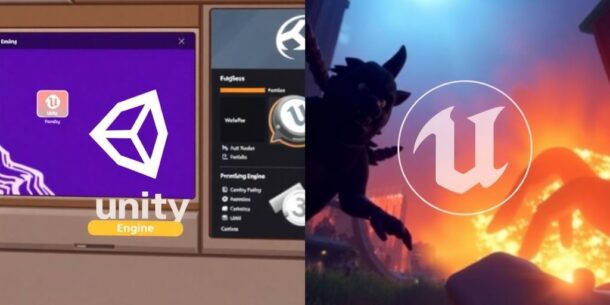
Choosing a game engine isn’t just about features; it’s also about how easy it is to learn and use. You want to spend more time creating and less time wrestling with the software, right? Let’s break down the learning curves for Unity and Unreal Engine.
Unity’s User-Friendly Interface
Unity is often praised for its intuitive interface. It’s designed to be approachable, even if you’re new to game development. The visual editor is drag-and-drop friendly, making it easy to assemble scenes and add components to game objects. Scripting is primarily done in C#, which is a widely used and relatively easy-to-learn language. Unity’s asset store also provides pre-made assets and tools, further simplifying the development process. This ease of use makes Unity a popular choice for beginners and indie developers. If you’re looking to speed up builds on Windows, there are tools available to help.
Unreal’s Complexity
Unreal Engine, on the other hand, has a steeper learning curve. While it offers powerful tools and stunning graphics capabilities, mastering Unreal requires a deeper understanding of programming concepts. The engine uses C++ as its primary scripting language, which can be more challenging to learn than C#. Unreal’s interface, while robust, can also feel overwhelming at first. However, Unreal’s Blueprint visual scripting system offers a more accessible entry point for those who prefer a node-based approach to programming. It’s worth noting that Unreal Engine is free to use, with a 5% royalty applied if your product earns more than $1 million.
Also Read: Is The Elder Scrolls Online Cross Platform
Best Practices for Beginners
No matter which engine you choose, there are some best practices to keep in mind when starting out:
- Start with simple projects: Don’t try to create an AAA game on your first try. Begin with smaller, manageable projects to learn the basics.
- Follow tutorials: There are tons of free and paid tutorials available online for both Unity and Unreal Engine. Take advantage of these resources to learn from experienced developers.
- Join the community: Both Unity and Unreal Engine have large and active communities. Don’t be afraid to ask for help and share your progress.
Choosing between Unity and Unreal Engine often comes down to your experience level and the type of game you want to create. Unity is generally easier to pick up and is great for 2D and mobile games. Unreal Engine offers more advanced features and is better suited for visually stunning 3D games, but it requires more time and effort to learn. Consider your goals and resources before making a decision.
Graphics and Performance Comparison
Visual Quality in Unity
Unity is pretty good for making games look nice, especially if you’re going for a stylized look or working on a 2D project. It’s not that Unity can’t do realistic graphics, but it often requires more work and extra assets to get there. You might need to tweak settings and use specific shaders to really push the visual limits. It’s also worth noting that Unity’s lighting system, while improved over the years, can sometimes be a bit tricky to get just right. But, for many indie developers, Unity offers a sweet spot between visual appeal and ease of use. Unity Engine is known for its flexibility.
Visual Quality in Unreal
Unreal Engine is often seen as the king of visual fidelity. It’s built to create stunning, realistic graphics right out of the box. The engine’s rendering capabilities are top-notch, and it includes advanced features like global illumination and physically-based rendering. This means that materials look more realistic, lighting is more dynamic, and overall, the visuals are just more impressive. Games like “Fortnite” and “Gears of War” show off what Unreal can do. If you’re aiming for AAA-quality graphics, Unreal is often the go-to choice.
Performance Considerations
When it comes to performance, both engines have their strengths and weaknesses. Unity is generally more lightweight and can run on a wider range of devices, including mobile phones and older PCs. However, this can sometimes come at the cost of visual quality. Unreal, on the other hand, is more demanding and typically requires more powerful hardware.
Here’s a quick rundown:
- Unity is better for 2D games and games targeting low-end devices.
- Unreal is better for high-fidelity 3D games and VR/AR applications.
- Both engines have optimization tools, but Unreal is often better optimized out-of-the-box for high-end visuals.
Choosing between Unity and Unreal often comes down to balancing visual quality with performance needs. If you’re making a mobile game, Unity might be the better choice. If you’re making a AAA game for PC or consoles, Unreal might be a better fit.
Also Read: How Big is Fortnite? System Requirements [Complete Size Guide]
Development Flexibility and Capabilities

2D vs 3D Game Development
Both Unity and Unreal Engine are powerhouses when it comes to both 2D and 3D game development, but they approach it differently. Unity is often favored for 2D projects due to its simpler workflow and dedicated 2D tools. Unreal Engine, while capable of 2D, really shines with its 3D capabilities. Unreal’s robust rendering engine and visual scripting system, Blueprint, make it a strong choice for visually stunning 3D games. It’s not that you can’t make a great 2D game in Unreal, but Unity tends to be more straightforward for that purpose.
Cross-Platform Support
If you want your game to reach as many players as possible, cross-platform support is key. Both engines do a pretty good job here, allowing you to deploy your game to various platforms, including PC, consoles, mobile, and web. Unity has been known for its ease of building for different platforms, but Unreal has been catching up. The choice might depend on the specific platforms you’re targeting and how well each engine supports them. For example, if you’re targeting niche consoles, you’ll want to check the engine’s compatibility.
Asset Store and Resources
Having access to a wide range of assets and resources can seriously speed up development. Both Unity and Unreal have their own asset stores, but they differ in content and pricing. The Unity Asset Store is known for its huge selection of assets, covering everything from models and textures to scripts and tools. Unreal Engine Marketplace also has a lot of stuff, but it tends to focus more on high-quality, AAA-ready assets.
Choosing between Unity and Unreal for development flexibility really comes down to your project’s needs. If you’re making a 2D game or need broad platform support, Unity might be the better choice. If you’re focused on high-fidelity 3D graphics and have the resources to invest in high-quality assets, Unreal could be the way to go.
Also Read: How Many GB is Valorant: Storage Guide
Cost and Licensing Models
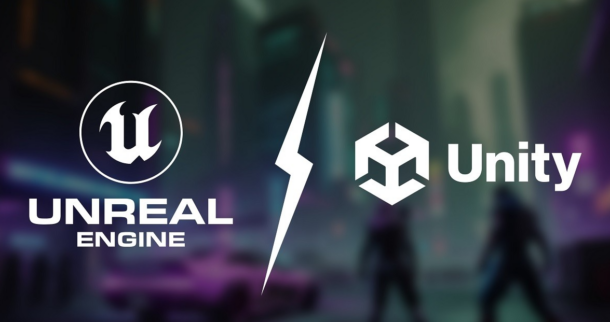
Choosing between Unity and Unreal Engine isn’t just about features; it’s also about the money. Both engines offer ways to get started for free, but their long-term cost structures differ significantly. Understanding these differences is key to making a financially sound decision for your project.
Unity Pricing Structure
Unity has gone through some changes recently, and it’s important to stay up-to-date. They primarily use a subscription-based model. This means you pay a recurring fee to use the engine and its tools. The specifics of the subscription depend on your revenue and the size of your team.
There’s Unity Personal, which is free but has limitations, and then there are paid plans like Unity Pro and Enterprise, which unlock more features and support. It’s worth checking their website for the latest details, as things can change quickly. The recent controversy around the Runtime Fee caused a lot of confusion, so make sure you’re looking at the most current information.
Unreal Pricing Structure
Unreal Engine takes a different approach. It’s free to use during development, and you only start paying when your game or application begins generating revenue. The standard model involves paying royalties to Epic Games (the creators of Unreal Engine) once you exceed a certain revenue threshold.
As last checked, this was $1 million in gross revenue. The royalty is typically a percentage of your gross revenue after that point. This can be appealing for smaller teams or indie developers who don’t want to front the cost of a subscription. However, if your game becomes a massive hit, those royalties can add up. It’s a good idea to use a royalty calculator to estimate potential costs.
Free vs Paid Features
Both Unity and Unreal offer a range of features in their free versions, but the paid versions unlock additional capabilities and support. Here’s a quick rundown:
- Unity: The free version is great for learning and small projects, but it includes a Unity splash screen. Paid versions remove the splash screen, offer better support, and unlock advanced features like cloud services and analytics.
- Unreal Engine: The free version is surprisingly powerful, with access to almost all of the engine’s features. The main difference is the royalty structure once you start earning significant revenue. You get access to the full engine, including source code, regardless of whether you’re paying royalties or not.
- Support: Paid versions of both engines typically come with better support options, which can be crucial for larger teams or complex projects. Consider the level of support you’ll need when making your decision.
Ultimately, the best choice depends on your specific circumstances. If you’re just starting out or working on a small project, the free versions of either engine might be sufficient. However, as your project grows and your revenue increases, you’ll need to carefully consider the costs and benefits of each engine’s licensing model. Don’t forget to factor in potential support costs and the value of additional features offered in the paid versions.
Also Read: How Long Does it Take to Download Fortnite on PC
Final Thoughts
In the end, picking between Unity and Unreal Engine really comes down to what you need for your project. Unity is like that reliable friend who’s always there to help you get started, especially if you’re new to game development. It’s user-friendly and perfect for smaller games or prototypes. On the other hand, Unreal Engine is like that flashy sports car—great for those who want stunning visuals and are ready to tackle a steeper learning curve. Both engines have their strengths, so think about your goals, your team, and what kind of game you want to create. No matter which one you choose, you’re on the path to making something awesome!
Guides
Escape From Tarkov Cheats: Premium EFT Hacks, ESP, Aimbot, and more!
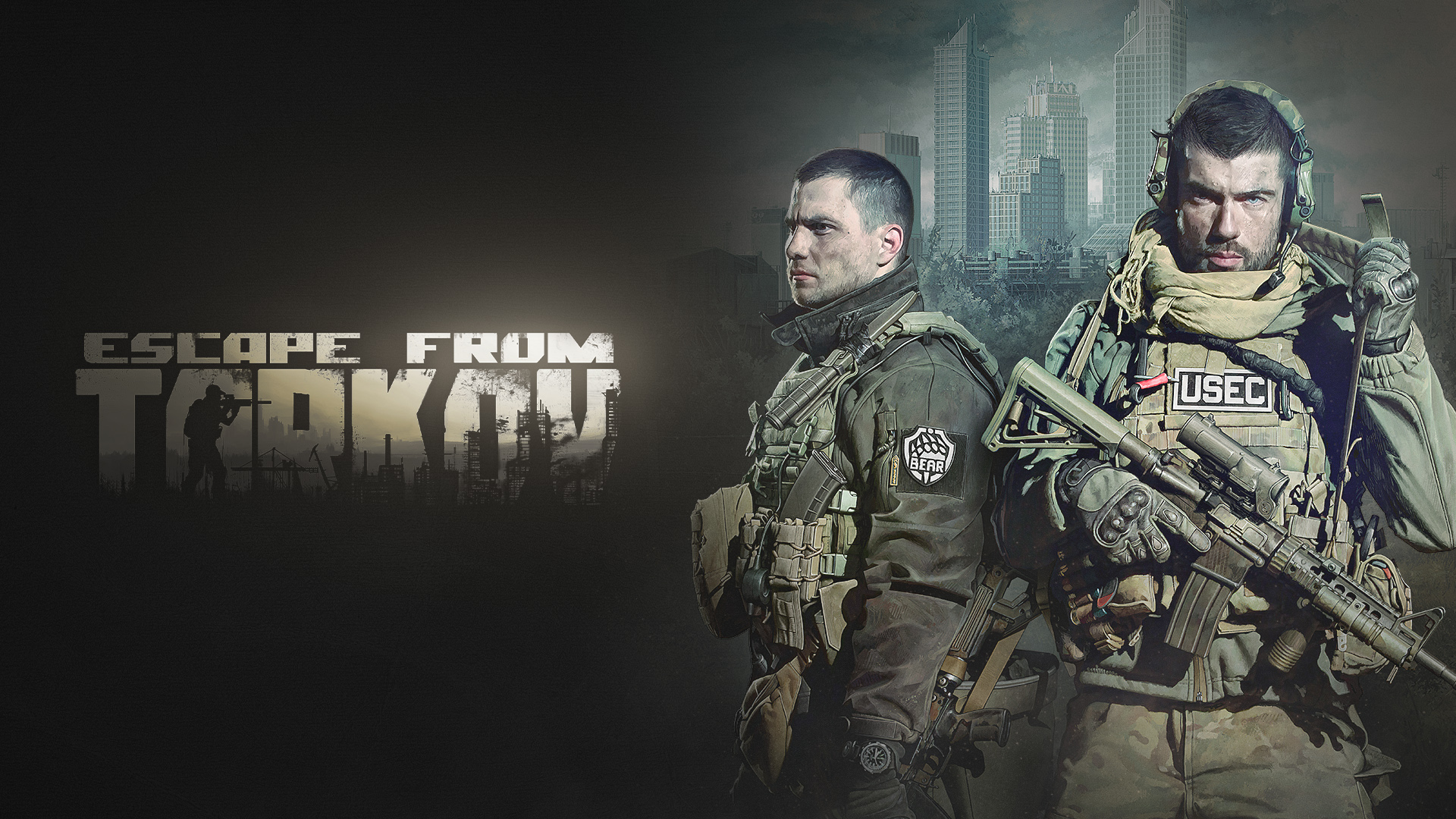
Escape from Tarkov (EFT) is all about high-intensity, complicated, and high-stakes survival gameplay. In each and every single raid, players generally stand to lose valuable gear, and they face foes treated with a hyper-realistic touch of skill. While some spend hours upon hours honing their skills, there are others who turn to Escape from Tarkov cheats and hacks to get the quickest advantage. These include very powerful features such as aimbots with ESP, wallhacks, radar hacks, and even auto-loot systems-with any one of these giving the player the unfair advantage in raids.
At Unigamesity, we have noted the increased interest in EFT hacks. Constantly, players are searching for manual ways to improve their gameplay. This article goes in-depth into the various types of Tarkov cheating methods, explaining how they work and why they have garnered so much popularity within the player base. With multicrystal clarity, these tools equip the user with almost superhuman prowess-from greater aim precision to seeing enemies through walls. So let’s start unraveling the most speculated Escape from Tarkov cheats and what remains practically irresistible to the players.
Understanding Escape From Tarkov Cheats and Hacks
Escape from Tarkov cheats, often referred to as EFT hacks, are third-party tools created to give players a competitive edge. These tools range from simple overlays that reveal item locations to advanced systems capable of controlling recoil, tracking enemies, and automating loot collection.
Some of the most common features include:
- Aimbot – automatic aiming assistance.
- ESP (Extra Sensory Perception) – displays information like player names, health, and distances.
- Wallhack – allows vision through solid objects.
- Radar hacks – show player positions on a minimap-style overlay.
- Auto loot systems – grab valuable items instantly.
These tools are frequently updated to bypass Tarkov’s anti-cheat protections and work seamlessly with the latest patches. At Unigamesity, we’ve noticed how popular these hacks have become due to EFT’s steep learning curve and the punishing nature of raids.
Also Read: League of Legends: All Level Borders Explained
How Escape From Tarkov Aimbot Changes the Game

The aimbot is perhaps the most well-known Tarkov cheat. It locks a player’s aim directly onto enemies, making firefights almost unfairly easy.
Key features of EFT aimbots include:
- Bone targeting – choose whether to aim for the head, chest, or legs.
- Recoil control – reduces weapon kickback, making automatic fire far more accurate.
- Field-of-view adjustments – lets players decide how wide the aimbot scans for targets.
- Smooth aim & aim delay – makes the aiming look more natural to avoid suspicion.
In a game where split-second gunfights determine survival, an aimbot offers a massive advantage. For many, it removes the frustration of mastering EFT’s steep recoil system and lets them focus on looting and survival.
The Power of ESP in Tarkov Cheats
ESP, or Extra Sensory Perception, is another fan-favorite hack. With ESP, players can see hidden information layered over their screen, such as:
- Enemy names and health bars.
- Distance markers for enemies and loot.
- Highlighted extraction zones.
- Rare item locations.
This cheat turns Tarkov into a map full of glowing markers, removing the stress of blind exploration. ESP is also highly customizable, allowing players to filter what they want to see—whether that’s only high-value loot or specific player threats. According to Unigamesity, this versatility makes ESP one of the most common cheats in Escape from Tarkov.
Also Read: Valorant Agent Release Order: A Complete Timeline
Wallhacks: Spot Enemies Before They Spot You
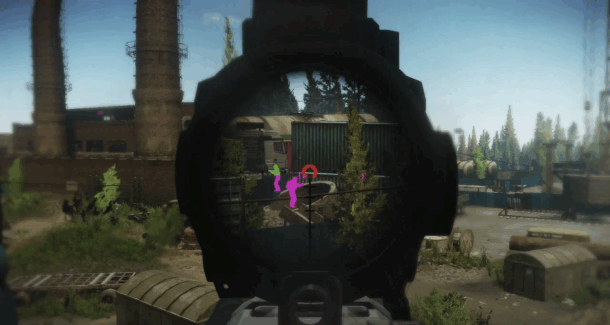
Wallhacks push awareness to the next level by letting players see opponents through solid objects. Whether hiding behind doors, crouching in buildings, or camping stairwells, no enemy remains truly hidden.
Features often included with EFT wallhacks:
- Skeleton outlines of players.
- Glow effects around enemies.
- Real-time tracking of movement through walls.
For those who fear ambushes or surprise attacks, wallhacks virtually eliminate uncertainty. Combined with ESP, wallhacks offer full knowledge of the battlefield before engaging in any fight.
Radar Hacks: Map Awareness at Its Peak
Radar hacks function like a permanent minimap, displaying player positions in real-time. This feature helps players avoid dangerous hotspots, plan ambushes, and track movement across Tarkov’s large maps.
A radar hack is especially powerful in squad-based play, where knowing exact enemy locations makes coordination simple. With this cheat, no opponent can sneak up unnoticed.
Advanced Features: Auto Loot, FOV Control, and Player Identification
Beyond the classic hacks, many premium Escape from Tarkov cheats now include advanced features:
- Auto Loot – automatically collects items based on custom filters. Players can prioritize rare loot while ignoring junk.
- Situational FOV Adjustment – dynamically changes aimbot scanning range depending on the scenario, making cheats appear more natural.
- Player Name Display – shows usernames on screen, even through walls, helping players identify high-value targets or avoid streamers.
These premium features make Tarkov cheats feel more like fully integrated tools rather than simple add-ons.
Also Read: LoL Champions by Release Date: A Complete Timeline
The Risks of Using Escape From Tarkov Cheats
While cheats may sound appealing, they come with significant risks. EFT uses BattlEye anti-cheat software, which is constantly updated to detect hacks. Getting caught can result in permanent bans, lost progress, and wasted money.
Additionally, many so-called “undetectable” cheats may come from shady providers, risking malware infections or account theft. At Unigamesity, we always stress the importance of caution when exploring these tools online.
Why Players Search for EFT Cheats Despite the Risks
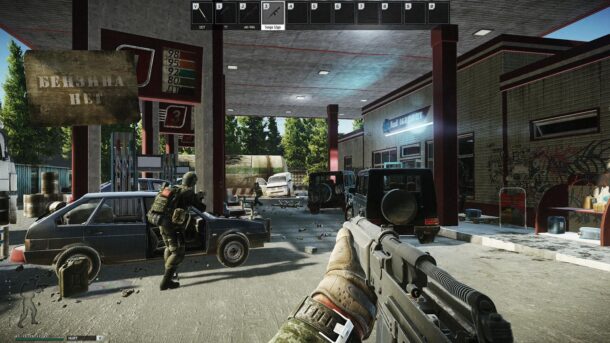
Escape from Tarkov is notoriously punishing. Hours of grinding can be lost in a single raid, and new players often struggle against veterans with better gear and map knowledge. Cheats offer a shortcut, giving less experienced players the ability to compete.
For some, it’s about curiosity. For others, it’s about saving time and resources. Ultimately, EFT cheats remain popular because of how much pressure Tarkov puts on its players.
FAQs
Q1: What is the most popular Escape From Tarkov cheat?
The two most common cheats employed are Aimbot and ESP, which give massive advantages in perfect aim and battlefield awareness.
Q2: Can EFT cheats get you banned?
Yes. BattlEye and other detection systems routinely lay the banhammer on accounts caught in the act of cheating. Most of these bans are permanent.
Q3: Are “undetectable” hacks really safe?
There is no cheapware that can claim to be 100% safe. Even the so-called premium ones sooner or later face detection.
Q4: Why do people use cheats in Escape from Tarkov?
Some players do so in an attempt to compete with veterans, speed up their looting, or just to have fun trying powerful tools.
Q5: Does Unigamesity recommend using EFT cheats?
Unigamesity lists the cheats for informational purposes only, and players should be aware of the risks involved in exploring them.
Also Read: How to Make Plant in Little Alchemy 2: Beginner Guide
Conclusion
A hardcore, high-stakes game where being skillful, alert, and prepared matters much. For the many players who find this steep learning curve too much to bear, EFT cheats such as the aimbot, ESP, wallhacks, and radar offer short dues for survival and domination. They offer easier raiding and greater rewards through better aim, better information, and faster looting.
Here at Unigamesity, we’ve seen these cheats become highly popular in 2025 and why so many players get pulled in by them despite the risks. The temptation of premium hacks might be hard to resist, but it is always recommended to stay aware of the consequences- permanent bans, losing your account, or even a security risk.
Guides
Valorant Agent Release Order: A Complete Timeline

Key Takeaways
- Valorant launched in June 2020 with 11 agents and has steadily added more with each episode.
- Agents are divided into four roles: Duelist, Controller, Initiator, and Sentinel.
- Each new agent influences the game’s meta, often changing team compositions and strategies.
- Characters like Killjoy, Chamber, and Gekko introduced new ways to control space and gather intel.
- Valorant’s lore includes Radiants, mirror Earth threats, and secret tech developments across the globe.
Introduction
Valorant has evolved since it first launched, and with every new agent that comes into play, the game just keeps getting better and better. Let’s find out when your favorite agent made their debut? We’ve put together a list of all Valorant agents in the order they were released, with their dates and roles.
What Is An Agent In Valorant?
In Valorant, the agent you pick is more than just a character with a cool skin and a weapon; they’re your key to victory in every match. Each agent has their own set of unique abilities that are used to smoke out enemies, reveal hidden dangers, heal teammates, or create total mayhem.
They’re categorized into four distinct roles: Duelists (the aggressive entry fraggers), Initiators (the intel gatherers), Sentinels (the defensive experts), and Controllers (the map manipulators). No two agents play alike, which keeps the game feeling fresh and exciting every time you jump in.
Riot Games is always adding new agents to the mix, each one crafted to change up the gameplay. So, choosing your agent isn’t just a routine before the match, it’s a crucial decision that influences the outcome of any round.
Valorant Agent Release Order: Full Chronological List

Since its debut in June 2020, Valorant has been on a constant journey of evolution. Each new character brings unique abilities, fresh team dynamics, and strategic changes that keep the gameplay thrilling.
Also Read: Call of Duty: Black Ops 6 – Campaign Review
Launch Roster (June 2, 2020)
- Brimstone – Controller
- Viper – Controller
- Omen – Controller
- Phoenix – Duelist
- Jett – Duelist
- Reyna – Duelist (technically the first post-beta agent, but added at launch)
- Sage – Sentinel
- Sova – Initiator
- Cypher – Sentinel
- Breach – Initiator
- Raze – Duelist
Episode 1: Ignition
- Act 2 (August 4, 2020) – Killjoy (Sentinel)
- Germany’s turret-wielding genius added fresh defensive tactics with her gadgets.
Episode 2: Formation
- Act 1 (January 12, 2021) – Yoru (Duelist)
- Valorant’s first stealthy agent introduced teleportation and deception to the game.
Episode 3: Reflection
- Act 1 (June 22, 2021) – KAY/O (Initiator)
- This is a robotic agent designed to suppress enemy abilities and disrupt aggressive plays.
Episode 3: Reflection
- Act 3 (November 2, 2021) – Chamber (Sentinel)
- The stylish French marksman was introduced to bring a deadly mix of precision and teleportation.
Episode 4: Disruption
- Act 1 (January 11, 2022) – Neon (Duelist)
- This is a high-speed agent from the Philippines who electrified the pace of entry plays.
Episode 4: Disruption
- Act 3 (April 27, 2022) – Fade (Initiator)
- A Turkish agent with nightmare-themed intel-gathering abilities.
Episode 5: Dimension
- Act 1 (June 22, 2022) – Harbor (Controller)
- Coming from India, Harbor brought water-based smoke and crowd control abilities to the game.
Episode 6: Revelation
- Act 1 (January 10, 2023) – Gekko (Initiator)
- From Los Angeles, Gekko introduced an adorable creature-based utility to support his team.
Episode 7: Evolution
- Act 1 (June 27, 2023) – Deadlock (Sentinel)
- A Norwegian agent who brought high-tech crowd-control abilities to slow down fast entries.
Episode 8: Defiance
- Act 1 (January 9, 2024) – Iso (Duelist)
- A Chinese agent focused on isolating 1v1 duels and bulletproof barriers.
Episode 9: Revelation
- Act 1 (June 25, 2024) – Clove (Controller)
- Clove introduced a unique death-based revive mechanic, shaking up post-death impact.
Also Read: Goodbye Volcano High Review
What Are Some Notable Shifts In Meta Due To New Agents?

Valorant’s meta has gone through some pretty wild changes over time, largely thanks to new agents shaking up the usual strategies. Every time Riot introduces a new character, it feels like someone hit the reset button on team compositions and playstyles.
- When Killjoy came onto the scene, defensive setups got a serious boost. Her turret and lockdown ability made it a lot tougher for teams to rush sites without a second thought. She really empowered Sentinels, especially in solo queue where map control is crucial.
- Yoru started off a bit lackluster, but after his rework, he brought a whole new level of mind games to the table. With his tricky teleports, fake-outs, and unpredictable flanks, defending became a lot less straightforward and required much better communication.
- Chamber came with his teleportation skills and unique guns, he took the place of traditional Sentinels and even some Duelists in various pro team compositions. Players loved his quick escapes and one-shot capabilities, where he was a force to be reckoned with in both ranked matches and esports until Riot decided to tone him down a bit.
- Then we saw Fade stepping in to take over the recon role from Sova in a lot of lineups. Her abilities made it easy to spot enemies without needing that perfect aim. Teams appreciated her Haunt and Prowlers, especially in tight spots and during post-plant situations.
- And just when you thought it couldn’t get any more interesting, Gekko arrived, shifting the meta towards agents who could juggle multiple tasks. His creatures could plant, flash, and gather intel all at the same time, making him a key player on both offense and defense.
What Is The Lore Timeline Of Valorant Agents?
Valorant’s lore unfolds in a near-future Earth, following a pivotal event known as First Light, which unleashed mysterious energy surges around the globe. This phenomenon led to the emergence of Radiants, people who gained extraordinary abilities. To harness and comprehend this newfound power, the Valorant Protocol was established, a worldwide task force comprising both Radiants and non-Radiants.
The narrative kicks off with early agents like Brimstone, Viper, and Phoenix, who represent the first wave of operatives. As new agents come on board, the lore deepens with each Episode, often teasing connections, rivalries, or personal quests. For instance, Yoru delves into ancient Radiant sites in Japan, while Fade reveals secrets through her fear manipulation. Meanwhile, Chamber and Deadlock are engaged in more clandestine and experimental tech initiatives.
As the story progresses, a significant twist emerges, there’s a mirror Earth inhabited by enemy agents from an alternate dimension. This adds an intriguing layer to the gameplay, explaining why players frequently encounter the same agents on rival teams. The stakes rise as more agents are enlisted to defend Earth against these mirrored threats.
Also Read: The Hundred Line: Last Defense Academy Review
What Has Been The Community Reactions And Fan Favorites?

The Valorant community is always ready to voice their thoughts when new agents make their debut. Take Reyna and Jett, for instance, these two quickly became fan favorites thanks to their flashy and aggressive playstyles. Then there’s Chamber, who also collected a huge following; players were drawn to his precision and laid-back personality, even if his dominance led to some balance concerns.
When Neon came onto the scene, fans were thrilled to see Filipino representation, and her fast-paced gameplay added a fresh twist to the game. Gekko, on the other hand, won hearts with his wholesome vibe and inventive utility, particularly his cute little creature sidekicks.
However, not every agent has hit the mark. Agents like Yoru at launch and Deadlock received a more mixed response, with players feeling they were either underwhelming or just didn’t make a significant impact.
Conclusion
Valorant’s ever-expanding roster of agents keeps the game exciting, competitive, and bursting with personality. It has iconic characters that people loved at launch to the game-changing newcomers.
Guides
League of Legends: All Level Borders Explained
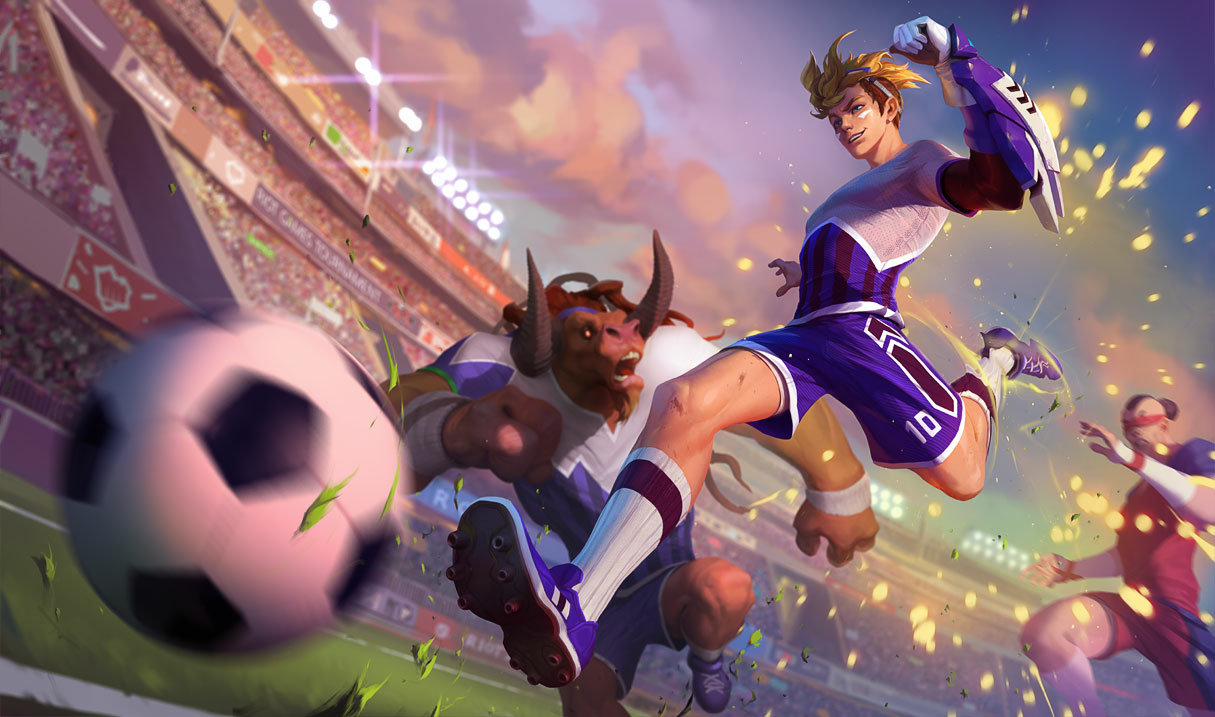
Key Takeaways
- Level borders are purely cosmetic frames that showcase your account level, not your skill.
- Riot Games offers 21 unique level borders, from Level 1’s Piltover frame to the rare Level 500 Eternus border.
- XP is earned by playing matches, with Summoner’s Rift generally providing the most.
- Level borders differ from ranked borders, which reflect seasonal performance.
- Common misconceptions include thinking borders improve gameplay or are linked to rank.
- Grinding for level borders is worth it for collectors and players who value visual progression.
Introduction
Level borders in League of Legends are a fun way to reward players for their time spent in the game. And to keep platers interested, Riot has come up with a variety of designs, all the way up to level 500.
In this article, we’ll explore all the level borders in detail!!
How Level Borders Work In League of Legends?
In League of Legends, level borders are eye-catching frames that pop up around your profile icon, showing your experience and commitment to the game. They’re all about aesthetics, no added damage or hidden perks and just a way to show off a bit.
Here’s the deal: Every time you level up your account, you gather XP from playing matches. As you hit certain level milestones, your border automatically gets a fresh design and color scheme. You can think of it as your personal “veteran badge” that evolves as you do.
The early levels change pretty quickly, so you’ll get to enjoy new borders more often. But once you start climbing past the higher milestones (like Level 300, 400, or 500), those upgrades become a lot rarer and way more prestigious. It’s Riot’s way of saying, “Yep, this player’s been around the Rift for a while.” And level borders are linked to your account level, not your ranked performance.
Complete List Of Level Borders And Their Level Requirements
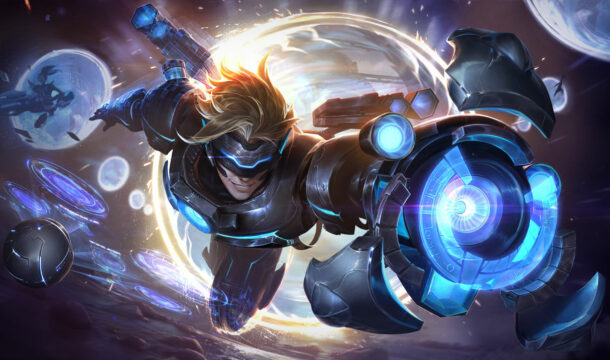
- Level 1: Piltover Border
- Level 30: Zaun Border
- Level 50: Hextech Border
- Level 75: Fire Border
- Level 100: Archlight Border
- Level 125: Infused Border
- Level 150: Shadow Isles Border
- Level 175: Shurima Border
- Level 200: Lunari Border
- Level 225: Warring Kingdoms Border
- Level 250: Freljord Border
- Level 275: Battlecast Border
- Level 300: Ionia Border
- Level 325: Bilgewater Border
- Level 350: Runic Border
- Level 375: Noxus Border
- Level 400: Celestial Border
- Level 425: Elderwood Border
- Level 450: Void Border
- Level 475: Blood Moon Border
- Level 500: Eternus Border
These 21 unique borders light up at important level milestones, starting with Piltover’s iconic frame at Level 1 and culminating in the epic Eternus border at Level 500. They create a vivid visual timeline that showcases a player’s commitment and journey in the Rift.
Just like level borders showcase your progression, many players also look for unique ways to customize their profiles through league of legends skins codes, adding a personal touch to their in-game experience.
How To Level Up Faster In League of Legends?
Play Summoner’s Rift over ARAM for maximum XP
You’ll generally earn more XP in Summoner’s Rift compared to ARAM or other game modes, especially during longer matches. Stick to Normal Blind or Draft Pick for the most reliable XP gains.
Win games when possible
Sure, you still earn XP when you lose, but winning really gives you a nice boost. Choose champions you’re comfortable with to help improve your chances of winning.
Complete daily and weekly missions
Don’t overlook those missions! Even if they’re part of an event or the regular mission system, they can provide bonus XP on top of what you earn from matches. Make sure to tackle them!
Use XP boosts wisely
You can grab XP boosts using Riot Points or Blue Essence. They come in two types—per-win boosts and timed boosts. Using them together can really speed up your leveling process.
Avoid early surrenders
Remember, your XP is linked to how long the match lasts. Surrendering at 15 minutes or going AFK mid-game will seriously cut into your XP gains.
Play in groups
Teaming up with friends can help you secure more wins and make the game more fun, which means you’ll want to play more often without feeling burnt out.
Consistency is key
Playing two or three matches a day will add up much quicker than taking long breaks and then cramming in a bunch of games at once.
Level borders not only showcase your dedication, but they also reflect just how many matches you’ve played – and considering how long is a League of Legends game on average, reaching higher levels is no small feat.
Borders vs. Other Profile Customizations
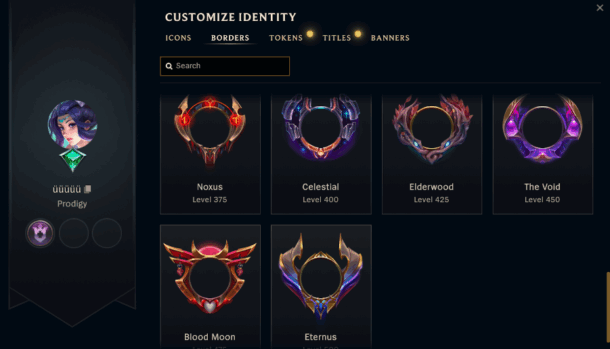
In League of Legends, level borders are just one part of the profile customization experience. They frame your profile icon, changing in design and color as you level up, serving as a subtle way to show off how long you’ve been playing. However, unlike ranked borders or other visuals, they don’t indicate your skill level, just the time you’ve put in.
On the flip side, ranked borders are awarded at the end of each competitive season and reflect your highest rank achieved. They show your competitive skills and are visible in loading screens, making them much more noticeable than level borders.
Then there are profile icons, summoner banners, and loading screen flairs, these often tie into events, achievements, or purchases, allowing for a more personal touch. Skins and chromas, while not part of your profile page, also help you stand out visually during gameplay.
So, what’s the main difference? Level borders change automatically over time, needing no extra effort other than playing the game. Ranked borders and special banners are based on achievements, while icons and flairs are simply collectible. Together, they create your unique visual identity in League, giving other players a glimpse of your experience and accomplishments.
What Are Some Common Misconceptions About Level Borders?
A lot of players seem to get confused about what level borders in League of Legends really mean. One of the biggest myths out there is that these borders reflect a player’s skill level. The truth is, they’re only linked to your account level, which shows how much time you’ve put into the game, not how skilled you are.
For instance, a Level 400 player can actually be less skilled than a Level 50 player who focuses on ranked matches. Another common misconception is that having a higher border gives you in-game perks, like extra stats or better matchmaking, this is totally untrue. Borders are just for show and don’t affect gameplay at all.
Some players also think that level borders are related to ranked borders, but they’re actually two different things: ranked borders reflect your performance in a season, while level borders track your overall account growth.
There’s even a myth that you can “lose” a border if you take a break from playing, but once you earn a border, it’s yours for good.
Lastly, some people believe that XP gains are random, but they actually follow specific rules based on how long the match lasts.
In addition to borders, the league of legends mmr system also plays a big role in how players are matched and progress through ranked games.
Are Level Borders Worth Grinding For In League Of Legends?
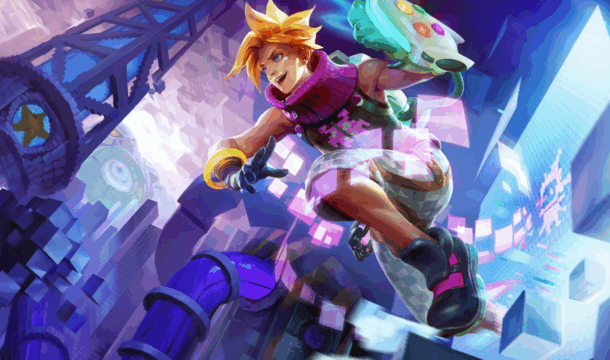
Level borders in League of Legends are definitely worth the grind if you love collecting those cosmetic milestones and want to show off your commitment. While they don’t change how you play, they serve as a subtle badge of honor, reflecting the time you’ve poured into the game.
For many players, hitting a rare high-tier border like the Level 500 Eternus frame can feel like a rewarding long-term achievement. That said, if your main focus is on competitive play, these borders won’t help you climb the ranks or improve your skills. Ultimately, they’re all about personal satisfaction and a bit of bragging rights, so it’s only worth the effort if you appreciate visual progression and recognition.
Conclusion
While level borders in League of Legends might not change how you play, they definitely add some flair to your profile and show your journey on the Rift.
-

 Guides6 years ago
Guides6 years ago6 Proven Ways to Get more Instagram Likes on your Business Account
-
Mainstream11 years ago
BioWare: Mass Effect 4 to Benefit From Dropping Last-Gen, Will Not Share Template With Dragon Age: Inquisition
-
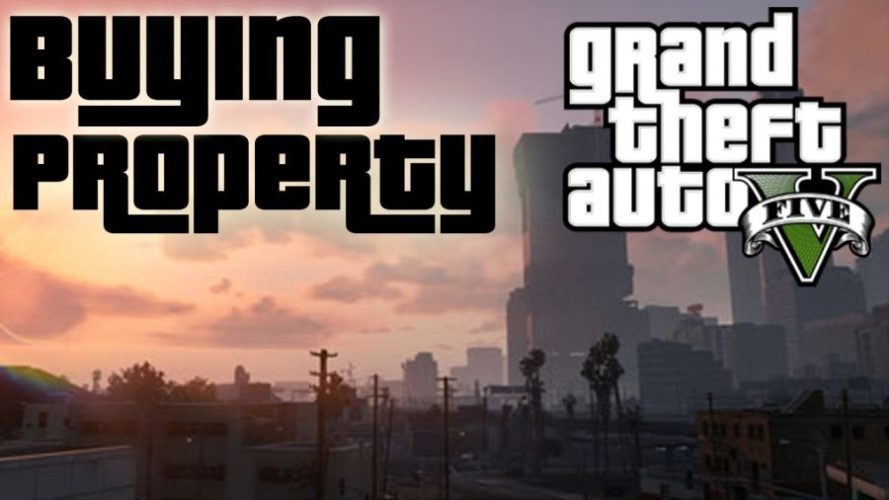
 Mainstream7 years ago
Mainstream7 years agoHow to Buy Property & Safe Houses in GTA 5 (Grand Theft Auto 5)
-

 Guides1 year ago
Guides1 year agoFree Fire vs PUBG: Comparing Graphics, Gameplay, and More
-

 Casual2 years ago
Casual2 years ago8 Ways to Fix Over-Extrusion and Under-Extrusion in 3D Printing
-
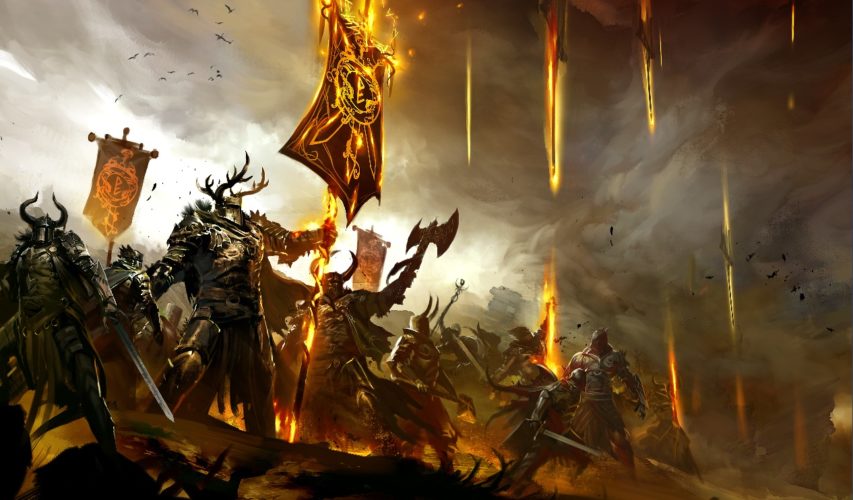
 Mainstream13 years ago
Mainstream13 years agoGuild Wars 2: The eSports Dream and the sPvP Tragedy
-

 Other2 years ago
Other2 years agoAjjubhai UID: Free Fire Details & Earnings
-

 Guides10 months ago
Guides10 months ago50+ Free Fire ID and Passwords Login List (Giveaway) 2025
